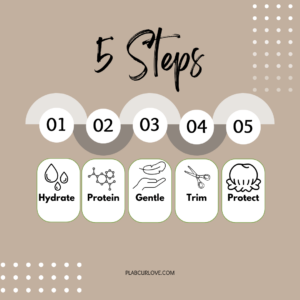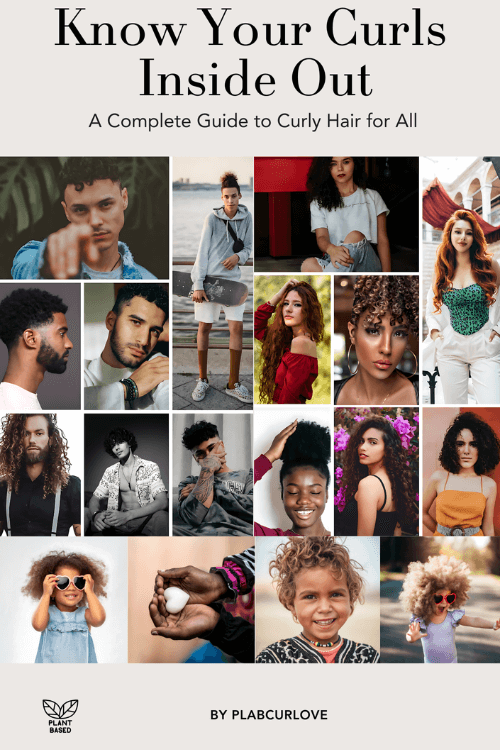Blog
5 Tips: Boost Curly Hair Elasticity

Understanding and maximizing the elasticity of your curls is a game-changer for achieving bouncy, vibrant locks. Curly hair, by its very nature, tends to have lower elasticity due to its shape, which can make it more prone to breakage. However, with the right care regimen, you can enhance your curls’ ability to stretch and snap back into place, ensuring gorgeous, healthy hair. Read on for 5 Tips: Boost Curly Hair Elasticity.
If you’re looking for ways to improve bounce and manageability in your curly mane, you’re in the right place. Here are five essential tips for enhancing the elasticity of your curls, providing you with the resilience you’ve always desired.
What is Hair Elasticity, and Why Does it Matter for Curly Hair?
Before we jump into tips on enhancing hair elasticity, it’s crucial to understand what this term means. Hair elasticity is its ability to stretch and return to its original length without breaking. This property is essential for maintaining the strength and overall health of your locks—critical for curly hair types, which are often dry and more prone to damage. But what affects hair elasticity?
Factors Affecting Elasticity
Several factors influence how well your hair stretches and springs back, ranging from genetics to the way you style and care for your curls.
- Genes determine your hair’s natural texture and strength.
- Heat styling can deplete moisture and protein levels, causing hair to lose its natural elasticity.
- Over-manipulation, tight hairstyles, and rough handling can lead to weakened hair fibers.
- Environmental factors such as UV rays and pollutants can also have an impact on elasticity.
To combat these issues and maintain or improve elasticity,
follow these five essential tips.

Hydrate with the Right Ingredients
Moisture is a non-negotiable aspect of maintaining good elasticity in curly hair. Without adequate hydration, your strands can become brittle and prone to snapping. But hydration is about more than just water—it’s about using products with the right ingredients that penetrate the hair shaft deeply.
Ingredients to Look For:
Curly hair types benefit from hydrating formulas that often include ingredients like:
- Hyaluronic acid, which can hold up to 1000 times its weight in water
- Aloe vera, known for its hydrating and soothing properties
- Vegetable Glycerin, a humectant that attracts moisture
Look for shampoos, conditioners, and treatments that contain these ingredients. Remember, less is more when it comes to washing—curly hair tends to be drier, so you don’t want to strip it of its natural oils by washing too frequently.
Protein Is Your Curls’ Friend
In addition to moisture, protein plays a significant role in maintaining elasticity. Hair is made of a protein called keratin, which can become weakened due to various factors. Incorporating protein treatments into your routine can help strengthen the hair and improve its resiliency.
Best Practices for Protein Use:
For fine or low-porosity curls, use protein treatments less frequently to avoid protein overload, which can make the hair feel stiff. High-porosity curls, on the other hand, may benefit from more regular protein treatments to help fill in gaps and reinforce the structure of the hair.
- Use deep-conditioning hair masks with added protein for an extra boost.
- Consider a leave-in conditioner with protein as a regular part of your styling routine.
- Be mindful of the type and amount of protein in your products. Look for ingredients like hydrolyzed wheat protein, which are easier for the hair to absorb.
Gentle Styling for Hair Integrity
The way you style your curls can have a massive impact on their elasticity. Avoid using techniques or tools that cause undue stress or friction on the hair. Opt for gentler methods that protect the hair from breakage.
Styling Tips to Minimize Damage:
- Use a wide-tooth comb or your fingers to detangle wet hair rather than a brush, which can cause breakage, especially on curly hair.
- When using heat, always apply a heat protectant to shield your curls from damage.
- Try protective styles like braids, twists, or buns to minimize exposure to elements that can cause damage to the curls.
Regular Trims for Healthy Ends
Split ends are like a run in your favorite sweater—they may be small, but they can quickly lead to bigger issues. Regular trims are a crucial step in maintaining the elasticity of your curls by preventing damage from spreading.
How Often Should You Trim?
The frequency of trims varies depending on how fast your hair grows and how well you maintain it. A good rule of thumb is to get a trim every 8-12 weeks. If you notice an increase in tangles or your hair feels rough towards the ends, it’s likely time for a trim.
- Opt for a salon visit or learn to trim your curls at home if you’re comfortable with the DIY approach.
- Remember that over-trimming can also lead to loss of length, so be conservative with the amount you cut each time.
Protect Your Hair Overnight
Don’t underestimate the stress your hair can face overnight. Friction from tossing and turning can cause tangles and breakage, which is why protecting your curls while you sleep is crucial for maintaining elasticity.
Protective Techniques for Overnight Care:
- Use a silk or satin pillowcase, which creates less friction on the hair than cotton.
- Consider wrapping your hair in a silk scarf or bonnet to keep it contained and prevent breakage.
- If you’re not a fan of scarves or bonnets, try a pineapple—a loose, high ponytail or bun that keeps most of the length of your curls bunched on top of your head.
With these tips, you’ll be well on your way to a head of resilient, bouncy curls that can withstand just about anything. Remember, healthy hair is a reflection of the care you give it, and when it comes to curls, elasticity is the key to both health and beauty.
A Summary to Snap Up Your Elasticity Essentials
In summary, the elasticity of your hair is a vital component of its health and appearance, and for curly hair in particular, it’s important to focus on hydration, protein, gentle styling, regular trims, and overnight protection. By incorporating these practices into your hair care routine, you can enjoy curls that are not only beautiful but strong and full of bounce.
And remember, consistency is key. Incorporating these tips into your regular hair care routine will yield the best results over time.
Ultimate Curly Hair Guide!

Transform your curls today with the ultimate guide to perfect curls—get your copy now! 🌀📚✨
Buy Now